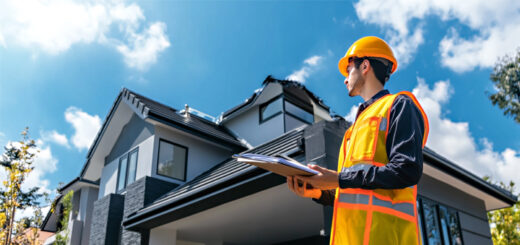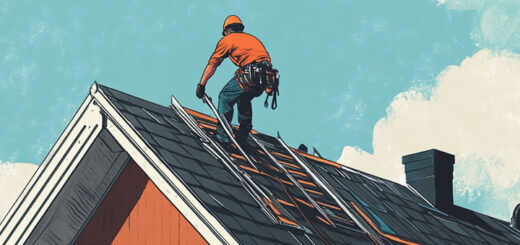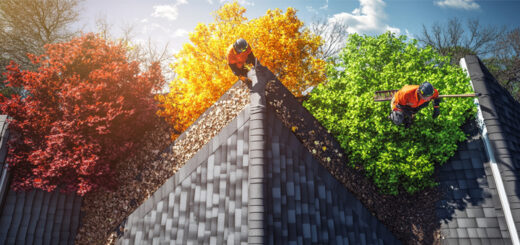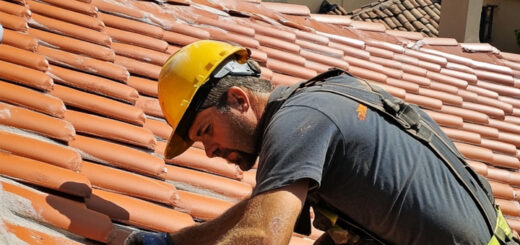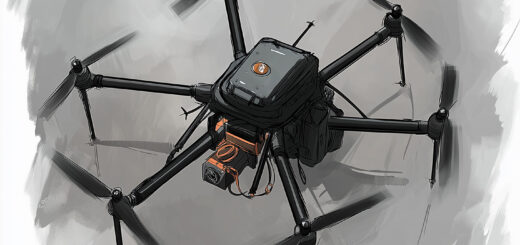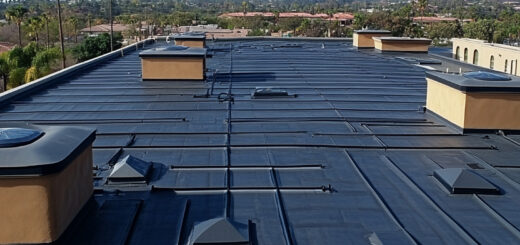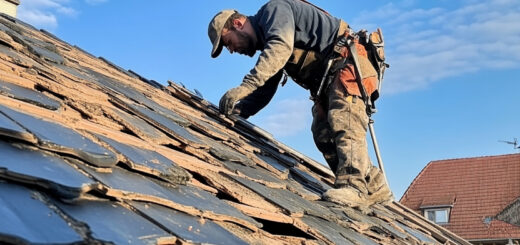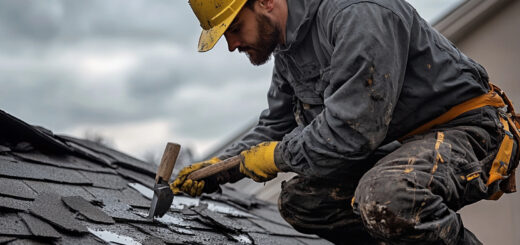Poor Roof Installation and Visible Errors: Identifying and Addressing Common Roofing Mistakes
Proper roof installation is a critical aspect of home construction and maintenance that should never be overlooked. A well-installed roof plays a pivotal role in maintaining the overall integrity of a building, ensuring structural stability, and protecting inhabitants from the elements. When installed correctly, a roof acts as a robust barrier against rain, snow, wind, and extreme temperatures, safeguarding the interior of your home from potential water damage and mold growth.
Moreover, a properly installed roof contributes significantly to energy efficiency. It helps regulate indoor temperatures by preventing heat loss in winter and heat gain in summer, potentially leading to substantial savings on heating and cooling costs. This energy-efficient feature not only reduces your carbon footprint but also enhances the overall comfort of your living space.
Another crucial factor to consider is the impact of roof installation on your home’s value. A well-installed, high-quality roof can boost curb appeal and increase property value, making it an attractive feature for potential buyers should you decide to sell your home in the future. Conversely, a poorly installed roof can lead to costly repairs, decreased energy efficiency, and potential structural issues, all of which can negatively affect your home’s market value.
In conclusion, investing in proper roof installation is essential for maintaining the long-term health and value of your property. It ensures protection against the elements, enhances energy efficiency, and contributes to the overall structural integrity of your home.
Common Signs of Poor Roof Installation
Identifying signs of subpar roof installation is crucial for homeowners to ensure the longevity and effectiveness of their roofing system. Several visible errors can indicate a poorly installed roof. Uneven shingles are a telltale sign, as they not only affect the roof’s appearance but also compromise its ability to shed water effectively. Improper nailing techniques, such as overdriven or underdriven nails, can lead to shingle damage and reduced wind resistance.
Missing or incorrectly installed flashing around chimneys, vents, and other roof penetrations is another red flag. Proper flashing is essential for preventing water infiltration and subsequent damage to the underlying structure. Poor ventilation, often overlooked during installation, can lead to heat and moisture buildup in the attic, potentially causing premature shingle deterioration and reducing the roof’s overall lifespan.
By familiarizing themselves with these common signs of poor roof installation, homeowners can take proactive measures to address issues early on, potentially saving themselves from costly repairs or premature roof replacement in the future.
The Consequences of Subpar Roofing Work
Poorly executed roofing work can lead to a cascade of problems for homeowners. One of the most immediate issues is the occurrence of leaks, which can cause extensive water damage to the interior of the house. This damage often extends beyond visible stains, potentially compromising the structural integrity of walls, ceilings, and floors.
Water infiltration also creates an ideal environment for mold growth, posing serious health risks to occupants. Mold can spread rapidly in damp, dark spaces, leading to respiratory issues and allergic reactions.
Substandard roofing frequently results in significant energy loss. Poor insulation and inadequate sealing allow heat to escape in winter and enter in summer, leading to increased energy bills and reduced comfort levels within the home.
Another crucial consequence is the reduced lifespan of the roof itself. A poorly installed roof may deteriorate much faster than expected, necessitating premature replacement and incurring substantial costs for homeowners.
Lastly, subpar work often leads to warranty issues. Many manufacturers’ warranties become void if the roof is not installed correctly, leaving homeowners without protection against defects or premature failure.
In conclusion, investing in quality roofing work is essential to avoid these potentially costly and dangerous consequences.
Identifying Specific Installation Errors
When assessing a roof for installation issues, it’s crucial to be aware of common mistakes that can compromise its integrity. Incorrect shingle placement is a frequent problem, often manifesting as misaligned or improperly overlapped shingles. This can lead to water infiltration and reduced wind resistance.
Inadequate underlayment is another critical error to watch for. This protective layer beneath the shingles should be properly installed to provide an additional barrier against moisture. Signs of inadequate underlayment include wrinkles, tears, or areas where it’s missing entirely.
Improper valley installation is a significant concern, as valleys are high-stress areas where water concentrates. Look for signs of poor sealing, incorrect flashing, or insufficient overlap in these crucial junctions.
Faulty ridge caps can also compromise roof performance. These components should be securely fastened and properly overlapped to prevent water intrusion and ensure proper ventilation. Loose, damaged, or improperly installed ridge caps can lead to leaks and reduced roof lifespan.
By identifying these specific installation errors, homeowners and professionals can address issues promptly, ensuring the longevity and effectiveness of the roofing system.
The Role of Professional Inspections in Detecting Poor Installation
Professional roof inspections play a crucial role in identifying poor installation practices and potential issues that may not be visible to the untrained eye. Certified roofers possess the expertise and experience necessary to conduct thorough evaluations of roofing systems. These inspections often utilize advanced diagnostic tools to detect hidden damage or weaknesses that could lead to future problems.
During a professional inspection, roofers carefully examine various components of the roof, including shingles, flashing, ventilation systems, and underlying structures. They can identify signs of improper installation, such as incorrect nail placement, inadequate sealing, or subpar materials. These issues, if left unaddressed, can result in leaks, reduced energy efficiency, and shortened roof lifespan.
Furthermore, professional inspectors can provide valuable maintenance recommendations based on their findings. This proactive approach helps homeowners address minor issues before they escalate into costly repairs. Regular inspections by qualified professionals are essential for preserving the integrity of your roof and ensuring its longevity, ultimately protecting your investment in your home.
Steps to Address and Rectify Poor Roof Installation
Addressing and rectifying poor roof installation is crucial for maintaining the integrity of your home. The first step is to assess the extent of the damage and determine whether repair options, partial replacement, or full replacement is necessary. For minor issues, repairs may suffice, but more severe problems often require partial or complete replacement.
When considering repair options, consult with multiple qualified contractors to get expert opinions and detailed estimates. These professionals can identify underlying issues and recommend the most appropriate solutions. If the poor installation is recent, you may be able to file warranty claims with the original installer or manufacturer.
In cases where partial replacement is needed, ensure that the new materials seamlessly integrate with the existing roof to prevent future problems. For extensive damage or systemic issues, a full replacement might be the most cost-effective long-term solution.
When hiring qualified contractors for the rectification work, thoroughly research their credentials, read customer reviews, and verify their insurance and licensing. This due diligence helps ensure that the new installation meets industry standards and local building codes.
Remember, addressing poor roof installation promptly can prevent further damage to your home and save you money in the long run. Regular inspections and maintenance can also help identify and resolve issues before they escalate into major problems.
Preventing Future Installation Errors
To avoid roofing installation errors in the future, homeowners should prioritize choosing reputable contractors with proven track records. Research potential roofers thoroughly, checking references and online reviews to ensure they have the necessary expertise and experience.
Understanding roofing materials is crucial for making informed decisions. Familiarize yourself with different options, their pros and cons, and which materials are best suited for your climate and home style. This knowledge will help you communicate effectively with your contractor and spot potential issues during the installation process.
Proper maintenance plays a vital role in preventing future problems. Establish a regular cleaning routine, removing debris and checking for signs of wear or damage. Address minor issues promptly to prevent them from escalating into major concerns.
Regular inspections are essential for catching potential problems early. Schedule professional roof inspections at least once a year, or after severe weather events. These check-ups can identify small issues before they become costly repairs, ensuring your roof remains in optimal condition for years to come.
By implementing these preventative measures, homeowners can significantly reduce the likelihood of installation errors and extend the lifespan of their roofs.
Legal Recourse for Victims of Poor Roof Installation
When faced with the consequences of poor roof installation, homeowners have several legal options at their disposal. Contractor liability is a crucial aspect to consider, as professional roofers are expected to adhere to industry standards and local building codes. If these standards are not met, the contractor may be held responsible for damages and repair costs.
Filing insurance claims can be another avenue for recourse, but it’s essential to review your policy carefully, as coverage may vary depending on the circumstances. Many homeowner’s insurance policies include provisions for damage caused by faulty workmanship, though there may be specific conditions or exclusions to be aware of.
Consumer protection laws also play a significant role in safeguarding homeowners against substandard work. These laws vary by jurisdiction but generally provide a framework for seeking compensation or demanding corrective action from contractors who fail to deliver satisfactory results.
Before pursuing any legal action, it’s advisable to seek a legal consultation with an attorney specializing in construction or consumer law. They can provide tailored advice based on your specific situation and guide you through the potential legal processes.
Throughout any dispute, the importance of documentation cannot be overstated. Maintain detailed records of all communications, contracts, receipts, and photographic evidence of the poor installation and resulting damage. This documentation will be crucial in supporting your case, whether you’re negotiating with the contractor, filing an insurance claim, or pursuing legal action.

